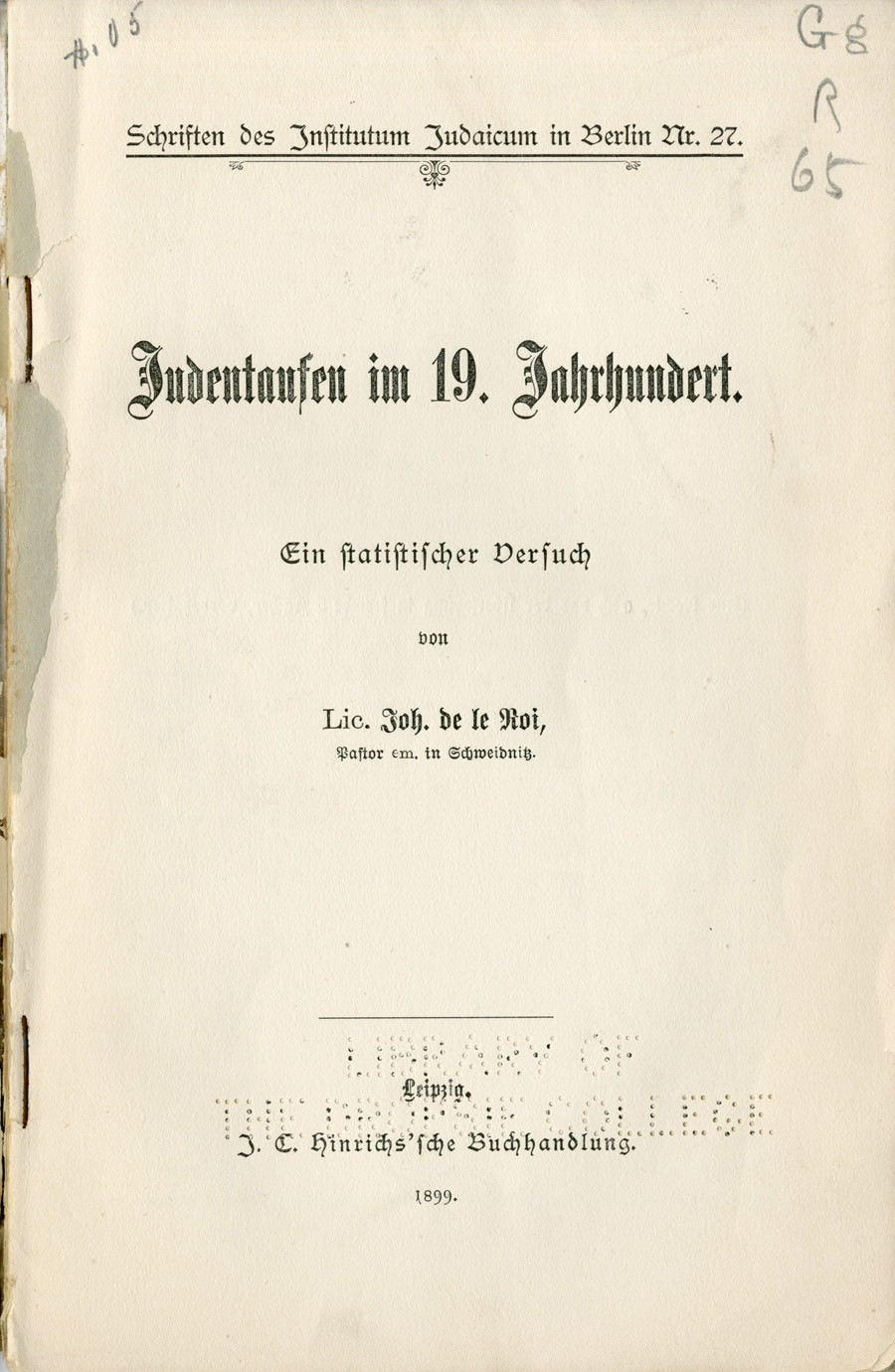Published by the Institutum Judaicum in Berlin for missionary work among Jews under the leadership of H. L. Strak (founded 1883), de le Roi's pamphlet is the commonly cited source for statistics on Jewish conversions to Christianity in nineteenth-century Europe. This work is particularly valuable, though not necessarily exhaustive, for arriving at a conservative guesstimate of the number of Jewish conversions in imperial Russia to Christian denominations other than Russian Orthodoxy, the legally "preeminent and predominant" church in the empire. De le Roi calculates that 3,136 Russian Jews converted to various Protestant confessions and 12,000 converted to Catholicism. According to this seemingly low estimate, of the approximately 84,500 converts from Judaism, 18% took place outside of the state church, and this percentage can rise as high as 28% if we focus exclusively on civilian conversions.
This book is significant for the study of Jewish conversions in the Russian empire for two main reasons. First, though conversion records of Jews abound in imperial archives in the Former Soviet Union, no institution in the empire aside from the Russian Orthodox church maintained yearly statistical records of converts. The Holy Synod, the lay governing body of the Russian Orthodox church, published yearly reports on converts categorizing them by province and former confession. As we lack such aggregate data from the Protestant and Catholic churches in the empire, de le Roi's work is at least a starting point for considering the extent to which Jews looked outside of the state church for religious conversion. Second, de le Roi's focus on all Christian conversions is a sound reminder that we risk oversimplification if we understand conversion in the self-consciously multi-confessional and multi-ethnic empire of Russia as a radical expression of Jews becoming "Russian." Russian Orthodoxy was not identical with imperial subjecthood, and official religious tolerance and institutional supports for the "tolerated foreign confessions" granted Jews a measure of confessional choice when converting. Thus, de le Roi's statistics on non-Orthodox conversions reminds us that Jewish conversion was not just an act of assimilation to some undefined imperial mainstream devoid of religious significance, and that it pays to consider the ways in which conversion in such an imperial setting was a local, individual affair, influenced by daily inter-confessional sociability and religious influence and access, rather than a "national" and purely instrumental act.
